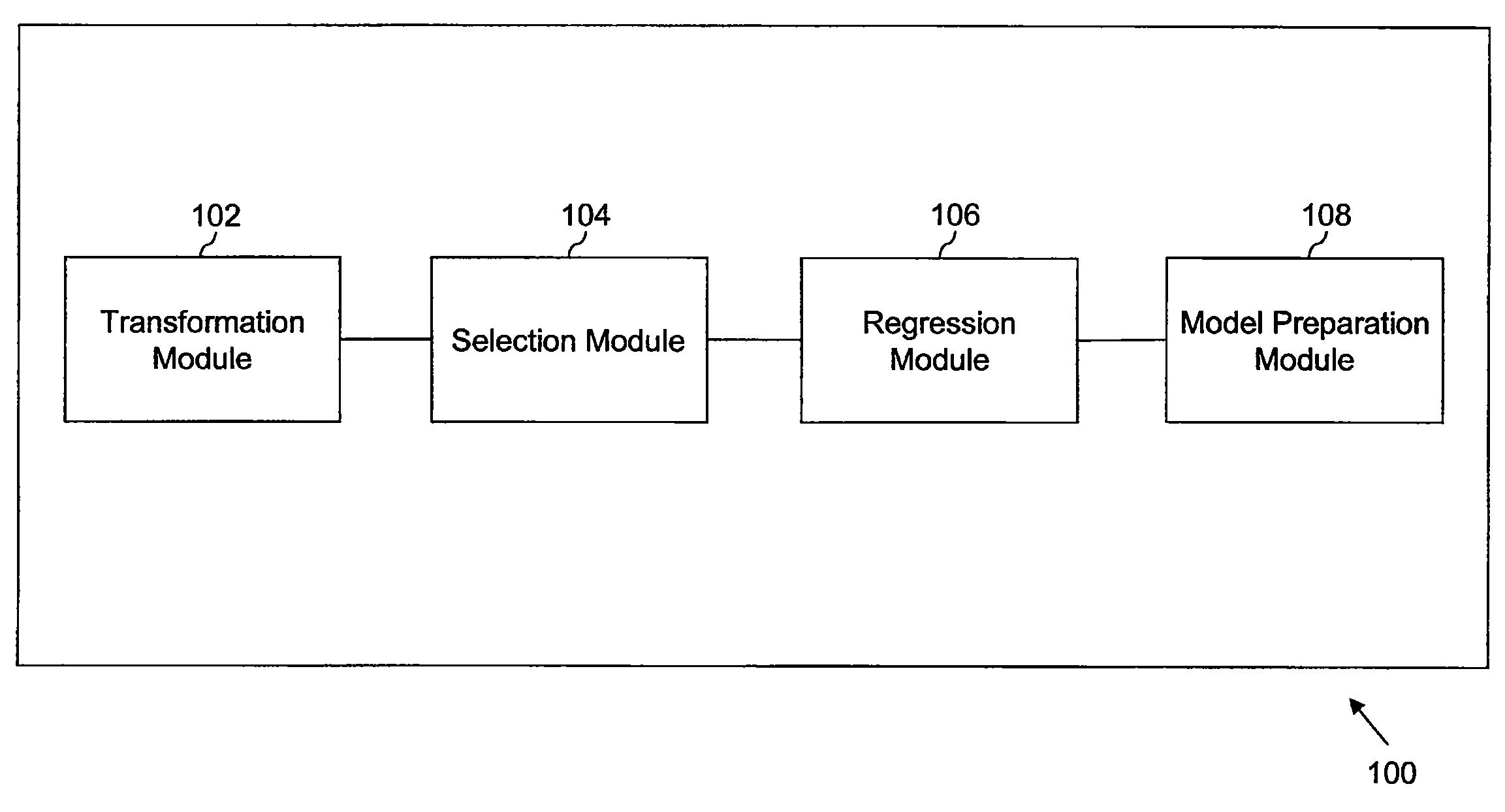Automated predictive modeling of business future events based on historical data
a predictive modeling and historical data technology, applied in the field of statistical modeling and analysis, can solve the problems of increasing time and resource requirements for predictive modeling, difficult identification, and inclusion of redundant modeling variables, and achieve the effect of reducing the modeling bias
- Summary
- Abstract
- Description
- Claims
- Application Information
AI Technical Summary
Benefits of technology
Problems solved by technology
Method used
Image
Examples
example implementation
IV. Example Implementation
[0040]FIG. 3 is a block diagram providing a detailed view of an exemplary system 300. System 300 is supported by the SAS® Statistical Software as described above.
[0041]System 300 includes an input module 302, a value substitution module 304, a transformation module 306, a selection module 308, a regression module 310, and a model preparation module 312.
[0042]Input module 302 enables entering information required for developing predictive models. In an embodiment of the invention, the information includes a plurality of modeling variables, a dependent variable, and a dataset for the modeling variables. In an embodiment of the invention, the information is input manually. In an alternative embodiment of the invention, the information is entered automatically.
[0043]In an embodiment of the invention, the dependent variable is a bivariate variable. In an alternative embodiment of the invention, the dependent variable is a continuous variable.
[0044]Value substitu...
PUM
 Login to View More
Login to View More Abstract
Description
Claims
Application Information
 Login to View More
Login to View More - R&D
- Intellectual Property
- Life Sciences
- Materials
- Tech Scout
- Unparalleled Data Quality
- Higher Quality Content
- 60% Fewer Hallucinations
Browse by: Latest US Patents, China's latest patents, Technical Efficacy Thesaurus, Application Domain, Technology Topic, Popular Technical Reports.
© 2025 PatSnap. All rights reserved.Legal|Privacy policy|Modern Slavery Act Transparency Statement|Sitemap|About US| Contact US: help@patsnap.com



